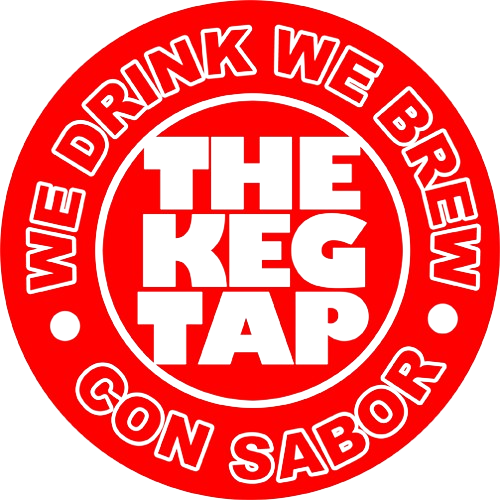The Homebrew Debate
There is a vast and growing population of those who enjoy drinking craft beer. Some of us drink it for the flavor we can’t find in the macro beer community. Some of us do it to be trendy and hipster or “cool.” Let’s face it, there are posers out there, even in craft beer circles. Some of us are home brewers that have an altruistic kinship to the brewers of these beers, as we can appreciate what they’re trying to accomplish. Many people simply enjoy the fact that most of this beer came from former fellow home brewers who took it to the next level. How do you think guys like Jim Koch from Sam Adams and Sam Calagione from Dogfish Head rose to prominence? Doesn’t this also add a certain amount of accessibility to it? People are now starting to think to themselves “hey I can do that too” and decide to give it a whirl.
We here at The Keg Tap have all decided to go down that route, and have been fortunate enough to produce plenty of batches of fine brew to enjoy and share with family and friends. Often times we have gone the easy route and made extract batches, sometimes we’ve done partial mash and other times on occasion will do an all-grain. What are these, you say? Well, they are the three types of brewing methods. Extract is for beginners, all-grain is the advanced level for experienced brewers. Partial mash is the middle ground and bridge between the two. Which is better? Glad you should ask. Here we will present to you the pros and cons of each, allowing you to decide for yourself how far the road to homebrewing will take you.
Pouring Liquid Malt Extract into the kettle
Extract
Honestly, if you’ve never brewed before, this is absolutely where you should start. This is the easiest and most basic level of brewing. Rather than having to mash several pounds of malted grains to come up with enough wort (pronounced wert) to produce your batch, the wort comes in the form of dry malt extract (DME) or liquid malt extract (LME). This is is either a powder (DME) or a syrup (LME) that takes a lot of work out of having to make wort, or sugar water. You mix it in with water and the small amount of base grains that are included and you’re halfway through the brew day already. All that’s left is to boil it, then begin adding hops for aroma, flavor and bitterness. Then once it cools down, you add yeast and that final step is what makes that sugar water turn into beer. Pretty simple right? Fairly cheap as well. An average 5 gallon extract batch will run you about 35-40 bucks or so. Not bad for two cases of beer, give or take a few.
Steeping specialty grains in kettle
Partial Mash
Also known as mini-mash, partial mash batches are much like extract batches in that they offer DME and LME to use in the process, but there is much more in the amount of base grains and less powder or syrup to contend with. There are also further steps you need to take when brewing a partial mash batch that weren’t in the extract brewing phase, allowing the brewer more control over the batch than pre-formulated extract brewing. More sparging is done, because of the increased volume of grains. The sparging process explained – You have to run water over the mash in order to collect the fermentable sugars that are created by germinating the grains. You get plenty of them during the mash, but during the lautering process (separating grain from wort) you stand to lose a lot of those sugars. Sparging helps to make sure they go where they should be going. In summary, with partial mash, you have all the elements of extract brewing, but you get to venture partially into the realm of all-grain with the addition of a larger grain bill and the additional steps and equipment required to complete this. At the same time however, you don’t depart too much from what you learned at the basic level.
Using all Grains in kettle photo by Jon.Jennings of flickr.com
All-Grain
Here, you have the power. You do all the work, the time spent handling each and every step is much greater than the other two. You start with the grains, crush or mill them and get your brew day started. There is no DME or LME to speak of, all of that is created by what your grain bill produces. That being said, it also gives you creative license on what you want to brew, because you’re not working with pre-formulated recipes. Like Captain Kirk, you are boldly going where no one (at least no one you know) has gone before. It is also cheaper to get the ingredients you need for the recipe than it would be to buy malt extract. That is, if you have already invested in the hardware you need to properly facilitate an all-grain brewing.
So which is better?
Here the homebrew debate begins. It is easier and faster to do an extract batch, allowing you more time to focus on drinking the beer you bought for brew day – an absolute necessity by the way, at least in my humble opinion. This is quite easy, and really all you have to do is follow the instructions and write down notes on your ready-made brew day sheet. All the times are listed for you. It’s like Home Brewing For Dummies, if there were such a book. (On that note, better look into that one.) Plus, you don’t need to spend much on equipment. I’ve seen some very basic homebrewing kits for around forty or fifty bucks. Tempting right?
Partial mash brewing does involve some extra time and equipment, but it is a learning step to get you on your way to being an all-grain brewer. You do have to spend a little more in equipment, the cost for the brewing ingredients is relatively the same, and a little more time is required to complete the necessary processes involved with partial mash brewing.
All-grain brewing requires more money to be spent on equipment, but once you start pumping out batch after batch, the costs seemingly go down, all things considered. Yes, you had to go into the “hundred(s) of dollars” range to get all the equipment and accessories needed for brewing, but producing these solely from grains rather than grains and syrup and powder will prove to be a cost-saver in the long run. Not to mention, as I’ve said before, it leaves the power and creative control in your hands. Brownie points…
We will be releasing some videos of these three types of brewing in the not too distant future, so you can get a better idea of each of these. You like craft beer, so I’m sure you’ll love to make your own. Who knows, you might just be the next big craft brewery and you don’t even know it yet. Only one way to find out – get yourself some gear and make yourself some beer. Cheers!

